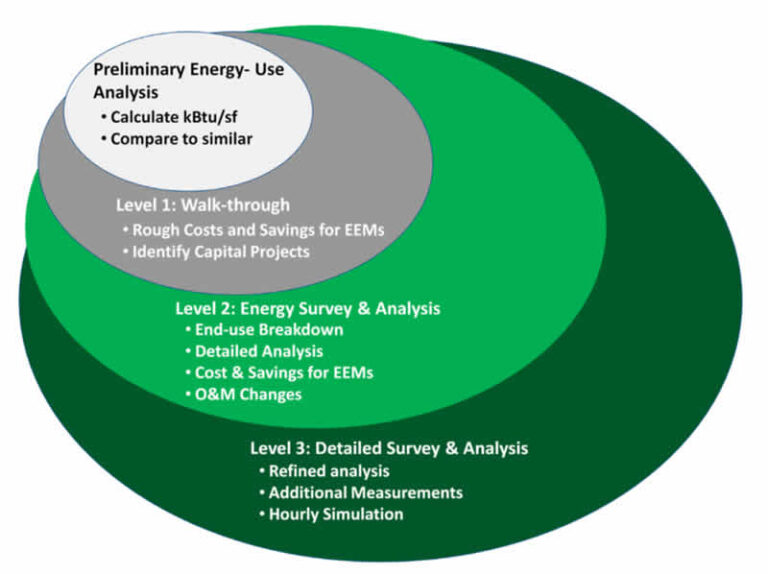Energy Audits
Comprehensive or Targeted
Energy Auditing Services
Lexus Engineering conducts Energy Audits (aka Energy Assessments) as per ASHRAE’s “Procedures for Commercial Building Energy Audits”. We work closely with the building owner and other stakeholders to determine the best course of action for the client.
A commercial building energy audit is classified into the following three levels of effort:
- Level 1—Walk-Through Analysis
- Level 2—Energy Survey Analysis
- Level 3—Detailed Analysis of Capital Intensive Modifications
We also conduct “Targeted Audits”, which have a limited scope, typically a single energy-using system, central plant, or area of the building. Some examples include lighting-only audits, boiler system audits, or electrical motor performance audits.
Regardless of the level of audit, a Preliminary Energy-Use Analysis (PEA) is required as the starting point. A minimum of 1 year of utility bills (preferably 2 or 3 years) is analyzed to determine the Energy Cost Index (ECI) and the Energy Utilization Index (EUI). The EUI is compared to similar buildings to assess the potential for improved energy performance and to determine whether further engineering study and analyses are likely to produce significant energy savings.
Relationships of ASHRAE Energy Audit Levels 1, 2, and 3

The primary deliverable of an energy audit is typically an energy audit report. The main purpose of audit reports is to recommend Energy Efficiency Measures (EEMs) and provide clients with reliable information upon which they can base courses of action to save energy in their buildings. The audit report also provides background information on the site, its energy use, the systems in the building, and the process of the audit itself. The energy audit does not end with the report—rather, the path to energy savings begins there.
Some of the above material was based on the document “Procedures for Commercial Building Energy Audits” by the American Society of Heating, Refrigerating and Air-Conditioning Engineers (ASHRAE)
The primary deliverable of an energy audit is typically an energy audit report. The main purpose of audit reports is to recommend Energy Efficiency Measures (EEMs) and provide clients with reliable information upon which they can base courses of action to save energy in their buildings. The audit report also provides background information on the site, its energy use, the systems in the building, and the process of the audit itself. The energy audit does not end with the report—rather, the path to energy savings begins there.
Some of the above material was based on the document “Procedures for Commercial Building Energy Audits” by the American Society of Heating, Refrigerating and Air-Conditioning Engineers (ASHRAE)
Contact Details
Get in Touch
![]()
Headquarters:
Unit 208, 8716-48 Avenue NW
Edmonton, Alberta
T6E 5L1


